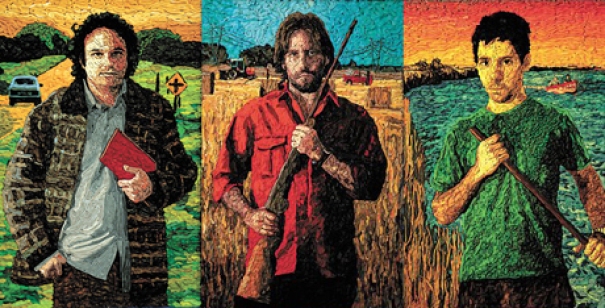La Haine Film Difficulty Ranking: 3
This film was so provocative and great that the French Prime Minister at the time commissioned a mandatory screening for all entire French cabinet. The film brings social unrest to the big screen, showing us that Paris is not the romantic and happy city that Hollywood and beyond have portrayed it as. Here are the people we have forgotten. Like Taxi Driver and Do the Right Thing, La Haine gives a voice to the marginalised.
Why Watch La Haine?
- You have been to Paris and seen the Eiffel Tower
- If you love a good cinema verite film (other cinema verite favourites include Che, and Battle of Algiers)
- For a male equivalent to Girlhood
- Because just like Spike Lee’s Do the Right Thing, this film is a timeless representation of social unrest
The Breakdown
I’m not even going to narrate the opening scene. Instead here’s the opening quote, read over the top of ‘documentary’ film of rioting in Paris.
Heard about the guy that fell off the skyscraper? As he falls, he tries to reassures himself by repeating:
“So far, so good. So far, so good.
It’s not the fall that matters. It’s the landing.
But it’s not just the powerful narrative that makes La Haine a great movie, the film is also full of incredible camera work. Pay attention to the introduction of Said. He is introduced, facing forward, in the middle of the frame with the housing projects behind him. His eyes are shut, but as the camera zooms into his face, they open. The director cuts to a POV shot with only the back of Said’s head in focus. As the camera moves towards Said, it focuses on what he is looking at, a bunch of policeman who are as static as the birds in Hitchcock’s Birds. They are not here to serve and protect. This sets up the rising tensions between Said and his crew and the police.
For all of you who are familiar with New York City hip-hop, this paragraph is for you. For all of those who aren’t familiar with New York City hip-hop, go listen to Nas’ Illmatic and tell me if it could be a soundtrack to La Haine. Here’s my reasoning:
- Hip-hop culture is prominent throughout the film, from breakdancing to DJing, it’s all covered.
- The words “The World is Yours” (the main track on Illmatic) feature on a billboard which Said changes to “The World is Ours” to claim the streets and city which he lives in despite their disenfranchisement.
- Both portray teenagers trapped within urban poverty and categorised because of it – there is no way out.
Conclusion
This film garnered so much critical buzz at Cannes and beyond. It is a timeless portrayal of disenfranchised teenagers growing up in the forgotten realms of cities. In addition, the camera work is extremely innovative. This might be the earliest film you’ve seen which uses drone cameras. In fact, apart from the appearance of Francs in the film (France’s old currency), I would have believed someone if they said that this film was made in the last few years.
(For an excellent piece on this film I’d recommend reading Indiewire’s review of the film 20 years on right here, although beware of Spoilers!)




